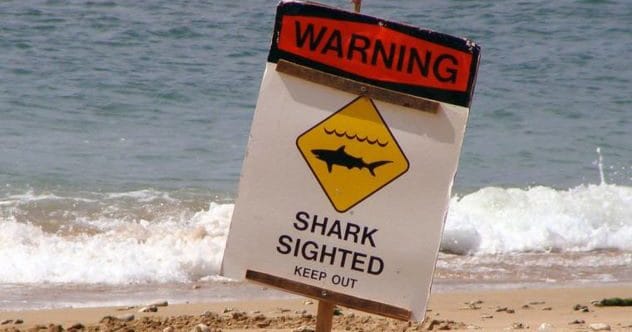Beaches often bring to mind images of sunny skies, soft sand, and gentle waves. They’re dream destinations for relaxation and fun. Millions flock to coastlines worldwide for surfing, swimming, and soaking up the sun. However, not all beaches are a paradise. Some hide dangers that can turn a dream holiday into a nightmare. Ready to explore the other side of these sandy shores? Here are 10 of the world’s most dangerous beaches.
10. Second Beach, Port St. Johns, South Africa
Second Beach in Port St. Johns, located on South Africa’s stunning Transkei coast, was once a beloved family holiday spot. However, its reputation has taken a dark turn. In recent years, it has become known as South Africa’s most dangerous beach due to shark activity. With eight fatal shark attacks on surfers and swimmers in just five years, Second Beach might be one of the riskiest spots globally for shark encounters. The primary culprit is believed to be the Zambezi shark, also known as the Bull shark. These sharks can grow up to 2.5 meters (8 feet) and are known for their aggressive nature, often biting anything they encounter in the water, similar to Tiger sharks.
9. New Smyrna Beach, Florida, USA
New Smyrna Beach in Volusia County, Florida, also ranks high for shark encounters. This popular state-run beach attracts many surfers and swimmers throughout the year. It averages about nine shark bites annually. The danger increases when large schools of juvenile fish migrate north along the Florida coast. These migrations involve millions of fish, attracting predators like sea birds and, notably, sharks. Fortunately, most sharks following these baitfish schools at New Smyrna are also juveniles, typically 2 meters (6 feet) or less in length. This means the majority of bites are not fatal, unlike encounters with larger sharks in other areas.
8. Boa Viagem Beach, Recife, Pernambuco, Brazil
Boa Viagem Beach in Recife, Brazil, is another spot known for its dangerous shark activity. Located in the heart of Recife, a city with two million residents, this tropical beach is very popular. Many locals enjoy beach activities like surfing and swimming year-round. However, there have been over 50 recorded shark attacks in the last 20 years, many of them fatal. Due to this high risk, surfing and swimming in water deeper than one meter (39 inches) have been banned since 1999. Lifeguards receive special training for shark-related injuries. Most incidents are attributed to Bull and Tiger sharks, both large and aggressive species. Despite ongoing discussions, the main strategy to prevent attacks remains keeping people out of deeper waters.
7. Sandy Beach, O’ahu Hawaii, USA
Sandy Beach on O’ahu’s southeast Ka’iwi Coast is infamously known to locals as “Broke Neck Beach.” This name comes from its powerful shore-break waves, which have caused numerous injuries to both visitors and locals. The beach regularly receives ocean swells from the northeast trade winds, creating short-period waves that form hollow, strong tubes crashing onto a steep, sandy shore. Sandy Beach is renowned for its excellent body surfing and bodyboarding conditions, drawing crowds all year. However, these forceful waves can slam surfers onto the shallow sandbar in dangerous positions, leading to injuries. While most are minor, like bruises or scrapes, some are severe, including broken necks, pelvic bones, and spinal cord injuries. The lifeguards at Sandy Beach are among the best trained in Honolulu, frequently using their rescue and first-aid skills in emergencies.
6. Makua Beach, Haena, Kauai, Hawaii, USA
Makua Beach, also called “Tunnels Beach” because of its offshore surfing spot, gained international attention after a shocking incident. In late October 2013, 13-year-old Bethany Hamilton was surfing with friends when a large Tiger shark, estimated at 4 meters (12 feet), attacked her. The shark bit off her left arm at the shoulder. This wasn’t the first shark encounter at this beach; regular surfers knew it was frequented by large Tiger sharks. However, Hamilton’s attack became the most famous, turning her into an international figure known as “Shark Girl.” Quick thinking by her friends to control bleeding and prompt medical care saved her life. Bethany Hamilton has since become a top professional surfer, wife, and mother, with her story shared in a book and a film.
5. Esperance, Western Australia, Australia
Esperance, in southwest Western Australia, seems like an ideal place with beautiful white sand beaches and perfect surfing waves in the Indian Ocean. Ocean-related activities are central to life here for both residents and tourists. However, this idyllic image has been marred by tragedy. Three fatal shark attacks on surfers and divers in just three years have deeply affected this close-knit community. All three attacks were attributed to Great White sharks. This has led many in the community to call for shark mitigation strategies, such as nets, sensor drumlines, or culling problem sharks. So far, the government’s response is limited to warnings to stay out of the water when sharks are present, pending further research and funding.
4. Okuma, Fukushima Prefecture, Japan
Before 2011, the beach in front of the nuclear plant at Okuma was a popular spot for surfers, fishermen, and other beach enthusiasts. On March 11, 2011, a massive offshore earthquake, measuring 9.0 on the Richter scale, struck the area. This was the largest earthquake ever recorded in Japan. The quake triggered a series of powerful tsunami waves that devastated the region. The Tokyo Electric Power Company (TEPCO) nuclear power station at Okuma, located right behind the beach, was in the tsunami’s path. A wave over 15 meters (50 feet) high breached the plant’s protective wall, flooding the diesel generators. This led to a partial meltdown of the reactor cores and a release of radioactivity. More than a decade later, the area around the TEPCO reactors remains an exclusion zone. No one is allowed on the beach as radioactive water is slowly released into the Pacific Ocean. This zone is likely to remain off-limits for many decades.
3. Imperial Beach, California, USA
Imperial Beach, south of San Diego, California, is a pleasant beach town known for its consistent and powerful waves, attracting surfers and other beachgoers. However, its reputation has suffered due to a problem originating outside the U.S. A massive wastewater treatment plant in Mexico, just across the border, handles waste from Tijuana, a city of over two million people. This plant is severely over capacity, and large amounts of raw sewage and industrial pollutants are regularly discharged into the Pacific Ocean. Prevailing ocean currents carry up to 140 million liters (35 million gallons) of toxic effluent daily across the border to Imperial Beach. Town officials often post warnings against entering the water, but they have little control over the pollution source in another country. Efforts are being made to divert and treat some of the Mexican wastewater in the U.S. to reduce the public health hazard.
2. Trois Bassins, Réunion Island, French Territory
The beautiful French island of Réunion in the Indian Ocean has experienced a surge in shark activity since 2011. There have been 19 shark incidents, resulting in seven deaths. These events have severely impacted the island’s vital tourism industry. Many surfers have left, relocating to mainland France or Australia, as surfing anywhere in Réunion has become extremely dangerous. Most attacks, attributed to an increase in aggressive Bull and Tiger sharks, have occurred on the island’s west coast. Before 2011, this area saw very few shark incidents. Various theories for the increase, like a no-take marine zone, haven’t been scientifically proven. Local authorities have tried solutions like culling sharks, installing nets, and banning surfing, but with limited success. Surfing, bodyboarding, and ocean swimming in Réunion remain high-risk activities.
1. Nanwan, Kenting, Pingtung Country, Taiwan ROC
Nanwan is a popular tourist town in Taiwan’s Kenting area, filled with hotels and restaurants. Its sandy beach offers numerous amenities, from umbrellas and parasailing to jet skis and surfboards. However, Nanwan can be extremely crowded, and one major danger is the unregulated use of jet skis and other watercraft. These vessels often race close to swimmers. Additionally, many visitors lack “ocean sense,” wave experience, or strong swimming skills, leading to tragic drownings even in calm seas. Nanwan is also positioned to receive ocean groundswells from seasonal typhoons. While this creates good surfing conditions, it’s perilous for inexperienced tourists. The presence of large, powerful waves often results in more unfortunate drownings among those unfamiliar with ocean conditions.
While beaches offer beauty and recreation, it’s clear that some carry significant risks. From hidden currents and dangerous wildlife to human-caused pollution, these shores remind us to always be aware of our surroundings. Safety should always come first, even in the most picturesque locations.
Have you visited any of these dangerous beaches, or do you know of others? Share your experiences and thoughts in the comments below!










